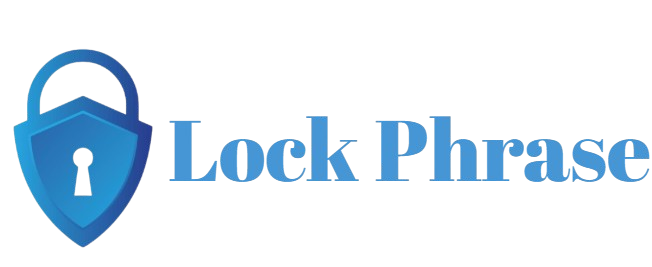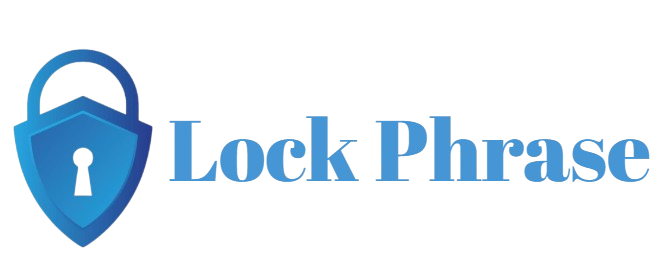In today’s digital world, websites are more than just online spaces—they hold sensitive data, support businesses, and represent brands. As cyberattacks become more frequent and advanced, securing your website is no longer optional. Even small blogs or personal portfolios can be targeted by hackers looking to steal information, inject malware, or hijack traffic.
WordPress is the world’s most popular website platform, which makes it a prime target for cybercriminals. Its large user base and thousands of plugins create many entry points that attackers try to exploit. Many site owners assume their sites are too small to be noticed—but that’s exactly why attackers automate their tools to go after vulnerable WordPress sites en masse.
The good news? You don’t need to be a developer or spend money to protect your site. This guide will walk you through simple, free, and beginner-friendly ways to Secure a WordPress Website. Whether you’re running a blog, business site, or online store, these practical steps will help keep hackers out and your site safe.
What Is Website Security and Why It Matters
Website security refers to the measures and practices used to protect your site from cyber threats like hacking, data theft, malware, and spam. Just like locking the doors of your house, website security helps prevent unauthorized access, keeps your content safe, and ensures your visitors have a safe experience. It includes everything from using strong passwords and secure connections to updating software and monitoring for suspicious activity.
Many people think hackers only target big businesses, but in reality, small websites are often the easiest to exploit. If your WordPress site gets hacked, it could lead to stolen personal data, blacklisting by search engines, or complete loss of your content. Worse, a compromised site can damage your brand’s trust and lower your SEO rankings—meaning fewer visitors and lost credibility. Even if you’re just running a personal blog, keeping your site secure is essential to protect both your content and your visitors.
Common Security Risks for WordPress Sites
Weak Passwords and Default Usernames
One of the easiest ways hackers break into WordPress sites is through weak login credentials. Many users still use “admin” as the username and simple passwords like “123456” or “password”. These are the first combinations hackers try when launching brute-force attacks. Always use unique usernames and long, complex passwords that combine letters, numbers, and symbols to reduce the risk of unauthorized access.
Outdated Plugins and Themes
WordPress plugins and themes add powerful features—but if they’re not updated regularly, they can become major security holes. Developers often release updates to fix bugs and close vulnerabilities. When you delay updates, hackers can exploit known flaws and gain access to your site. It’s crucial to regularly check for updates and remove any plugins or themes you no longer use.
Brute-Force Login Attacks
In a brute-force attack, hackers use automated bots to guess your login credentials by trying hundreds or thousands of combinations. If your site doesn’t limit login attempts, attackers can keep trying until they get in. This can not only lead to a successful hack but also slow down your website due to repeated login attempts.
Lack of SSL (HTTPS)
SSL (Secure Sockets Layer) encrypts the connection between your website and your visitors, ensuring sensitive data like login credentials or contact form entries can’t be intercepted. Without HTTPS, your site is vulnerable to man-in-the-middle attacks and may be flagged as “Not Secure” by browsers like Chrome, which hurts user trust and SEO performance.
Unmonitored File Changes or Unknown Plugins
If a hacker gains access to your site, one of the first things they may do is modify core files or install hidden plugins that allow backdoor access. Without a monitoring system in place, these changes can go unnoticed for weeks or months. Regularly scanning your website and monitoring file integrity can help detect suspicious activity early and keep your site safe.
Free Ways to Secure Your WordPress Site
1. Use Strong and Unique Login Credentials
One of the easiest and most important ways to secure your WordPress site is by using strong and unique login credentials. Many websites get hacked simply because they use common usernames like “admin” and weak passwords such as “123456” or “password.” Hackers use automated bots to guess these credentials and break into websites through brute-force attacks. Using a unique username makes your login harder to guess, while a strong password makes it nearly impossible to crack.
A secure password should be long and include a mix of uppercase and lowercase letters, numbers, and special symbols. Since it’s difficult to remember complex passwords, you can use a free password manager like Bitwarden or KeePass. These tools store your credentials securely and help you generate strong passwords that you don’t need to memorize. With a password manager, you only need to remember one master password, and the rest are filled in automatically when you log in. By taking this simple step, you can block one of the most common ways hackers gain access to WordPress websites. This method is completely free and takes just a few minutes to set up, but it offers long-term protection and peace of mind.
2. Keep WordPress Core, Plugins, and Themes Updated
Keeping your WordPress installation, themes, and plugins up to date is essential for website security. WordPress and its plugin developers frequently release updates that fix bugs, improve performance, and most importantly—patch security vulnerabilities. When you ignore updates, your website becomes exposed to known threats that hackers can easily exploit. Even a small outdated plugin can be enough to let an attacker into your site. Fortunately, updating your site is simple and completely free. You can check for available updates right from your WordPress dashboard.
To save time and ensure you never miss an update, you can also enable automatic updates for WordPress core, plugins, and themes. This feature can be turned on manually in your site’s settings or configured using a plugin that manages updates for you. It’s also good practice to delete any unused plugins or themes, as they can still pose risks even if inactive. Keeping your site updated doesn’t require technical skills and can be done with just a few clicks. It’s one of the most effective ways to protect your website from attacks, and it ensures your site remains fast, functional, and secure for your visitors at all times.
3. Install a Free Security Plugin
Adding a security plugin to your WordPress site is one of the easiest and most effective ways to protect it from hackers. Security plugins work in the background to scan for malware, block suspicious login attempts, monitor file changes, and alert you about potential threats. You don’t need to be a technical expert to use them—most are beginner-friendly and guide you through setup with clear instructions. Popular free options include Wordfence and All-In-One WP Security & Firewall. These plugins offer a wide range of protective features, such as blocking IPs that try to log in too many times, scanning your site for malicious code, and enforcing strong password policies.
After installation, you can access all the features directly from your WordPress dashboard, and most come with helpful tips for choosing the best security settings. Even the free versions of these plugins provide solid protection for small to medium-sized websites. If you’re running a personal blog, portfolio, or small business site, installing a security plugin is a must. It adds a strong layer of protection against cyberattacks—without requiring money, coding skills, or external tools—making it one of the smartest free moves for WordPress site owners.
4. Hide or Change the Default Login URL
By default, every WordPress site uses the same login page URL—usually something like /wp-login.php or /wp-admin. Hackers know this, and they use bots to target these common URLs, trying to guess your login credentials through brute-force attacks. Changing your login URL makes it harder for them to even find the door, let alone try to break in. This simple step can dramatically reduce unauthorized login attempts on your website. Fortunately, you don’t need to write any code or mess with settings to make this change. A free plugin like WPS Hide Login allows you to customize your login URL easily.
Once installed, you can change the URL to something unique, like /my-secret-login or any phrase that only you know. This doesn’t stop attackers completely, but it hides your login page from bots that automatically target WordPress sites. It’s like putting your doorbell on the side of the house instead of the front—only people who know where it is can find it. This trick, when combined with strong passwords and limited login attempts, adds an extra layer of security and is completely free and easy to apply, even if you’re new to WordPress.
5. Enable Two-Factor Authentication (2FA)
Two-factor authentication (2FA) adds an extra layer of security to your WordPress login process. Instead of just entering a password, you’ll also need to enter a temporary code that’s sent to your phone or generated by an app. This means even if a hacker guesses your password, they still can’t get into your site without the second factor. Enabling 2FA is one of the most powerful ways to protect your WordPress site, and it’s completely free. You can set it up using plugins like miniOrange or by installing a free app like Google Authenticator on your smartphone.
Once configured, you’ll scan a QR code to link your site to the app, and you’ll receive a new login code every 30 seconds. Even if someone tries to log in from another country using your password, they’ll be blocked because they don’t have your phone. This method is simple, highly effective, and only takes a few minutes to set up. Most people are already familiar with 2FA from using email or banking apps, so adding it to WordPress feels natural. For peace of mind and better protection, enabling 2FA is a smart and practical move.
6. Schedule Regular Backups
No matter how many security measures you take, there’s always a small chance something could go wrong—whether it’s a hacking attempt, a plugin conflict, or a server crash. That’s why having regular backups of your WordPress website is essential. A backup is a copy of your entire site, including content, images, themes, plugins, and settings. If your site ever gets hacked or accidentally deleted, you can quickly restore it to a working version without starting from scratch. The good news is that you don’t have to pay for backup services.
Free WordPress plugins like UpdraftPlus or BackWPup make it easy to create and store backups. These plugins let you schedule automatic backups daily, weekly, or monthly and save them to cloud services like Google Drive or Dropbox. That means you’ll always have a recent copy of your site, even if you’re not tech-savvy. Setting up backups takes only a few minutes and gives you long-term peace of mind. If anything ever goes wrong, you’ll have a safety net ready. It’s a smart, beginner-friendly solution that protects all the hard work you’ve put into your website—without costing you a thing.
7. Limit Login Attempts
Hackers often try to gain access to WordPress sites by using automated bots that guess username and password combinations over and over—a tactic known as a brute-force attack. If your site doesn’t limit how many times someone can try to log in, it becomes an easy target. That’s where login limiters come in. By limiting login attempts, you prevent repeated failed login tries, locking out users or bots that exceed the allowed number of tries. This dramatically reduces the chances of a hacker guessing the right password. It’s a simple yet highly effective defense—and you can implement it completely free with a plugin like Limit Login Attempts Reloaded.
Once installed, the plugin allows you to set rules for how many times a user can try to log in before being temporarily blocked. You can also receive notifications of suspicious activity, helping you take action before it escalates. This solution works quietly in the background, protecting your login page 24/7 without needing any tech skills. Limiting login attempts is one of the easiest ways to lock down your WordPress site and stop attackers before they even get in. It’s fast, effective, and free.
8. Use HTTPS with a Free SSL Certificate
HTTPS is a secure version of HTTP, and it encrypts the connection between your website and your visitors. This means that any information exchanged—like passwords or contact forms—is protected from hackers trying to steal data. Having HTTPS also boosts your site’s credibility and is now considered essential for SEO, as Google favors secure sites in search results. If your site doesn’t have HTTPS, visitors might even see a warning that it’s not secure, which can scare them away. Thankfully, adding HTTPS to your WordPress site is both free and easy.
You can get a free SSL certificate from a service like Let’s Encrypt, and many web hosting providers offer one-click SSL installation as part of their hosting package. Once the certificate is active, you can use the Really Simple SSL plugin to automatically update your settings and force secure connections throughout your site. You don’t need any technical skills—the plugin handles the setup for you. Switching to HTTPS not only protects your site and your visitors, but it also builds trust, improves your SEO ranking, and shows that your site is safe to use—all at zero cost.
Conclusion
Securing your WordPress website doesn’t require technical expertise or a big budget. With free tools and a few simple habits, you can protect your site from hackers, keep your visitors safe, and preserve your online reputation. From using strong passwords and enabling two-factor authentication to installing security plugins and setting up backups, each step you take reduces your site’s vulnerability.
Hackers often target small websites because they assume no one’s watching. But with the beginner-friendly solutions we’ve shared—like limiting login attempts, keeping your plugins updated, and using HTTPS—you can stay a step ahead. Most of these actions only take a few minutes to set up but can save you from days or even weeks of stress if your site is ever compromised.
Think of website security as an ongoing habit, not a one-time fix. The internet is constantly changing, and so are threats. Stay informed, stay updated, and use the many free resources available to you. Your WordPress site is an important part of your online presence—keep it safe, secure, and strong.


